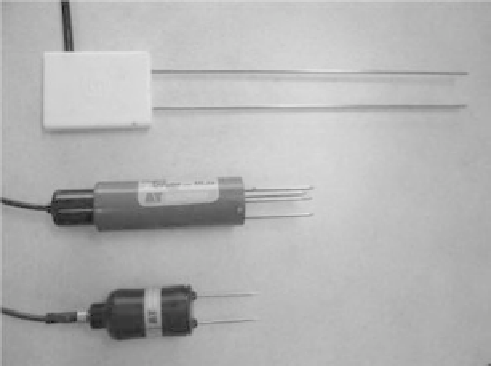Environmental Engineering Reference
In-Depth Information
variation of readings with depth. The most consistent results
were obtained when using the nuclear moisture meter.
Geotechnical engineers become involved with the field
monitoring of water content on a wide range of materials. As
a result, it is important to take into consideration the material
in which the water contents are being monitored. Calibration
checks should be undertaken to confirm the reliability of the
company-published calibration curves.
4.6 ESTIMATION OF SOIL SUCTION
Estimation techniques play an important role in approximat-
ing soil variables that might be needed as part of an engi-
neering analysis involving unsaturated soils. It is not always
possible to measure every variable of relevance; however, in
many situations it is sufficient to estimate certain variables
or possibly estimate a likely range of values that might be
encountered. Estimation procedures are particularly useful
when assessing the components of soil suction.
Figure 4.92
CS616 (top), ML2x (middle), and SM200 (bottom)
probes for measuring volumetric water content.
clay is shown in Fig. 4.93 for the CS616 device. Similar cal-
ibration results are shown for the ML2x and SM200 devices
in Figs. 4.94 and 4.95. All three dielectric constant devices
showed a standard error between the measured and pre-
dicted volumetric water contents of slightly more than 3%.
A second-order polynomial equation was found to fit the
relationship between the dielectric constant and volumetric
water content.
Another comparative study was reported by the IAEA
(2008) where several surrogate water content measuring
systems were installed in two irrigated test plots (Fig. 4.96).
Dry and wet irrigation conditions are shown along with
4.6.1 Estimation of Matric Suction
There are a number of observations that can provide an engi-
neer with an indication of the matric suction in the field. The
matric suction in the field will be less than the residual suc-
tion for the soil. Sandy soils may typically have an air-entry
value between 1 and 10 kPa. There is often about one order
of magnitude between the air-entry value and the residual
matric suction. Therefore, it would be anticipated that the
residual suction for a sand soil would often be between about
10 and 100 kPa. The classification of the soil can provide
10
2
√
K
m
= 0.0881 + 28.87
θ −
22.67
θ
R
2
= 0.9444
8
Calibration equation
6
Campbell Scientific (2004)
4
Topp et al. (1980)
2
Measured by CS616-1
Measured by CS616-2
0
0
0.1
0.2
0.3
0.4
0.5
0.6
Volumetric water content,
θ
Figure 4.93
Dielectric constant as function of volumetric water content when using CS616
probe on Regina clay (after Hu et al., 2010).









































Search WWH ::

Custom Search